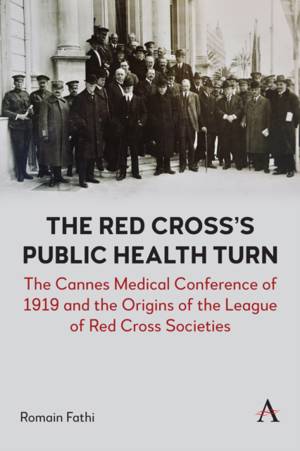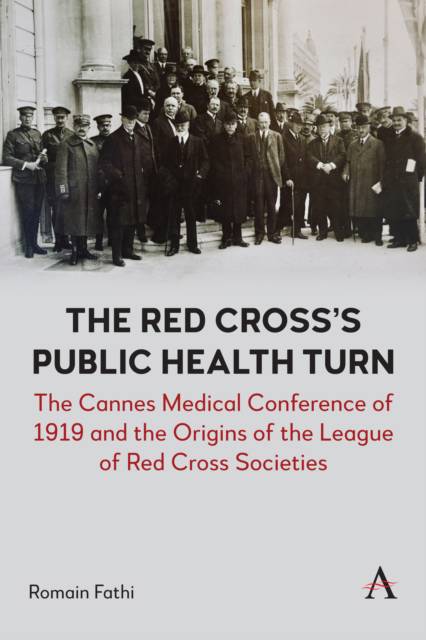
- Retrait gratuit dans votre magasin Club
- 7.000.000 titres dans notre catalogue
- Payer en toute sécurité
- Toujours un magasin près de chez vous
- Retrait gratuit dans votre magasin Club
- 7.000.0000 titres dans notre catalogue
- Payer en toute sécurité
- Toujours un magasin près de chez vous
The Red Cross's Public Health Turn
The Cannes Medical Conference of 1919 and the Origins of the League of Red Cross Societies
Romain Fathi
40,45 €
+ 80 points
Description
This book is about the Cannes Medical Conference of April 1919 and its long-lasting impacts in the humanitarian space. In the aftermath of the First World War, as the world order was being redesigned, this conference served to shift the Red Cross movement towards peacetime and public health work. The book examines the origins, course and consequences of the Cannes Medical Conference, and its wider legacy within the Red Cross movement: a legacy which is very significant yet almost completely undocumented. The book demonstrates that this medical conference was a watershed moment that served to pivot the Red Cross movement across the world, from war and conflict-related activities to peacetime programs such as relief, disease and disaster management. The Red Cross movement is one of the largest humanitarian organisations in the world, and initially, its aim was to alleviate the suffering of people on the battlefield. In 1919, however, a new Red Cross organisation was created in Paris: the League of Red Cross Societies (LRCS) to considerably expand Red Cross work around the world. The Cannes Medical Conference was the catalyst for the creation of the LRCS. Understanding this conference is therefore paramount to understanding why and how the LRCS was created, how it was imagined, and what its functions were. The LRCS still exists today, known as the International Federation of the Red Cross: it is the largest humanitarian organisation in the world, with 191 national Red Cross societies as its members, and it is based in Geneva. Much has been written on the International Committee of the Red Cross (ICRC), but there has been very little research on the International Federation of the Red Cross, or its ancestor, the LRCS. Aside from a few pages in less than a handful of publications, the way in which the Cannes Medical Conference established the LRCS's mission remains unknown. This book therefore proposes something that is innovative and that advances the historiography of the Red Cross movement, of humanitarianism and of public health.
Spécifications
Parties prenantes
- Auteur(s) :
- Editeur:
Contenu
- Nombre de pages :
- 96
- Langue:
- Anglais
- Collection :
- Tome:
- n° 1
Caractéristiques
- EAN:
- 9781839994340
- Date de parution :
- 10-06-25
- Format:
- Livre broché
- Format numérique:
- Trade paperback (VS)
- Dimensions :
- 152 mm x 229 mm
- Poids :
- 140 g

Les avis
Nous publions uniquement les avis qui respectent les conditions requises. Consultez nos conditions pour les avis.






